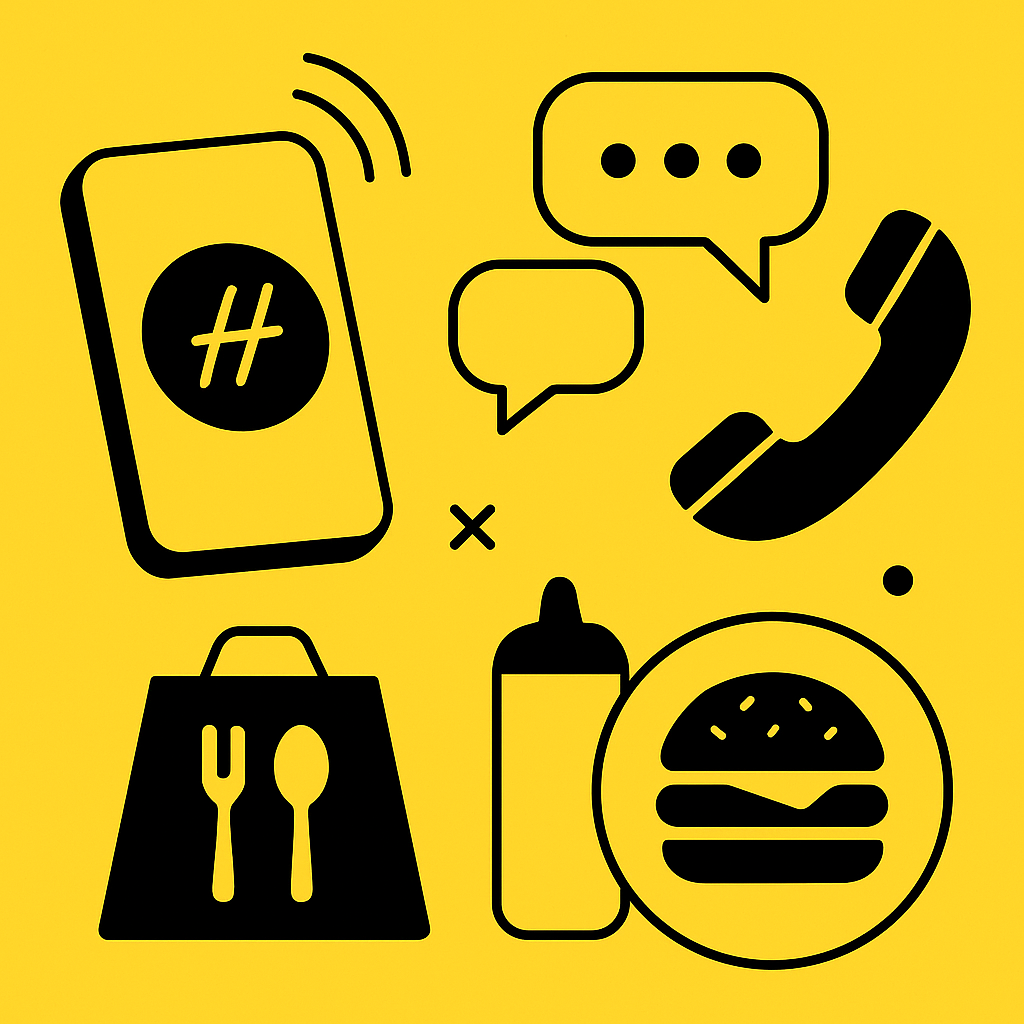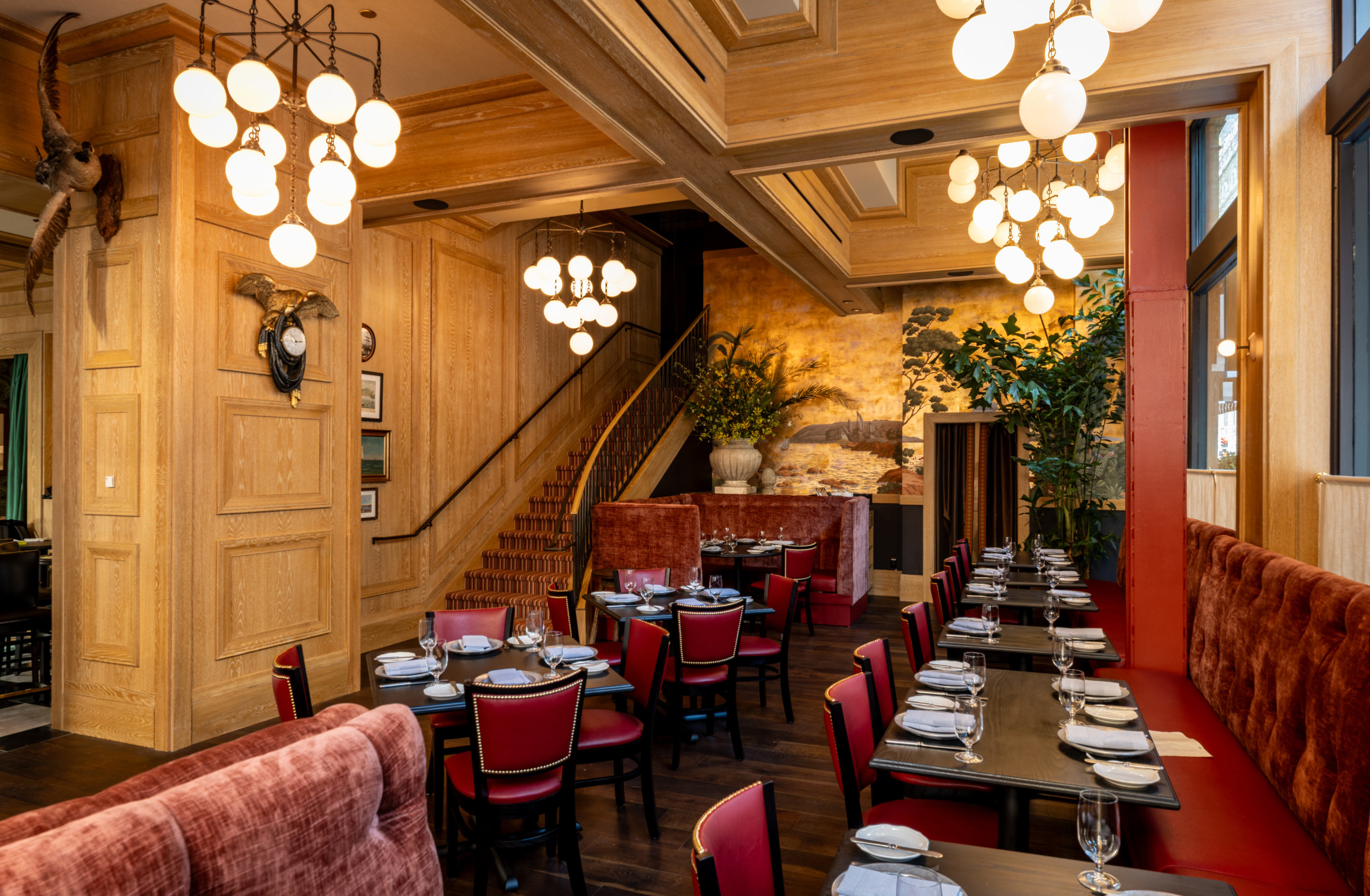
Every unanswered phone call in your restaurant is money walking out the door. While you're focused on perfecting that signature dish or managing the dinner rush, potential customers are hanging up after three rings and ordering from your competitor down the street. The numbers are staggering: restaurants lose an estimated 10% of their calls, translating to about 150 missed opportunities every month (HungerRush). For quick-service restaurants averaging $27,000 in annual losses from missed calls, the solution isn't hiring more staff—it's implementing AI phone answering technology that delivers measurable returns.
The restaurant industry is experiencing a technological revolution, with 87% of UAE operators, 79% of U.S. operators, and 74% of U.K. operators already leveraging AI in some capacity (SevenRooms). Major chains like Applebee's and IHOP are testing Voice AI Agents to handle customer orders over the phone, recognizing the potential to streamline operations while reducing staff stress (Newo AI). The food and beverage AI market, currently valued at $9.68 billion, is expected to reach $49 billion over the next five years (Hospitality Tech).
This comprehensive ROI analysis will walk you through the real numbers behind AI phone answering for quick-service restaurants, using industry benchmarks and actual case studies to demonstrate how a $199 monthly investment can generate returns between 700-1,700%. We'll examine call volume patterns, average order values, labor costs, and provide sensitivity analysis for different restaurant concepts—from pizza shops to cafés—so you can calculate your specific return on investment.
Phone communication remains the backbone of restaurant customer service, despite the digital revolution. Between 49 to 62 percent of customers still prefer to do business over the phone, according to First Orion research (Franchising.com). Yet restaurants are failing to capitalize on this preference, with devastating financial consequences.
Restaurants average 187 calls daily, but only 30 percent have systems capable of properly answering or routing these calls (Franchising.com). This creates a perfect storm of lost revenue, as 80 percent of callers won't leave messages and 85 percent won't attempt a callback (Franchising.com).
Industry research reveals that restaurants miss approximately 43% of incoming calls during peak hours, when staff are overwhelmed with in-person service demands. This translates to significant revenue losses across different restaurant segments:
| Restaurant Type | Average Daily Calls | Missed Calls (43%) | Average Order Value | Daily Lost Revenue |
|---|---|---|---|---|
| Pizza Shop | 120 | 52 | $28 | $1,456 |
| Café | 85 | 37 | $18 | $666 |
| Fast Casual | 150 | 65 | $22 | $1,430 |
| Quick Service | 200 | 86 | $15 | $1,290 |
These daily losses compound quickly. A typical pizza shop losing $1,456 per day faces annual revenue losses of $531,440—money that could fund expansion, equipment upgrades, or staff bonuses. Even smaller cafés with lower call volumes lose approximately $243,090 annually from unanswered phones.
Customer patience has eroded significantly in the digital age. Research shows that 91% of customers expect to be on hold for 3 minutes or less (HungerRush). When restaurants fail to meet this expectation, customers don't just hang up—they actively seek alternatives.
The hospitality industry has recognized this challenge, with over two-thirds of Americans stating they would avoid restaurants that don't answer their phones (Hostie AI). This isn't just about immediate lost sales; it's about long-term customer relationship damage that compounds over time.
Restaurant communication has evolved dramatically from the days of simple order-taking. Modern AI phone answering systems represent a sophisticated blend of natural language processing, integration capabilities, and hospitality-focused design. These systems don't just answer calls—they engage with customers in ways that feel natural and helpful.
Hostie AI exemplifies this evolution, having been developed by restaurant industry veterans who understand the nuances of hospitality communication (Hostie AI). The platform integrates directly with existing reservation systems, POS systems, and event planning software, creating a seamless experience that feels like a natural extension of restaurant operations (Hostie AI).
Modern AI phone answering systems offer comprehensive functionality that extends far beyond simple call answering:
Reservation Management: AI systems can check availability, book tables, modify existing reservations, and send confirmation messages—all while maintaining the warm, hospitable tone customers expect from fine dining establishments.
Order Processing: Integration with POS systems allows AI to take complete orders, process payments, and coordinate with kitchen staff for pickup or delivery timing.
Customer Service: AI can answer frequently asked questions about menu items, hours, location, dietary restrictions, and special events without requiring staff intervention.
Multi-Channel Communication: Beyond phone calls, advanced systems handle texts, emails, and even social media inquiries through unified interfaces.
The sophistication of these systems is evident in their deployment at high-end establishments. After integrating with partner restaurants such as Flour + Water and Slanted Door, Hostie now handles over 80% of guest communications automatically (Hostie AI). This level of automation doesn't replace human hospitality—it enhances it by freeing staff to focus on in-person guest experiences.
AI phone answering systems leverage multiple technologies working in concert:
Natural Language Processing (NLP): Advanced algorithms understand context, intent, and nuance in customer speech, allowing for natural conversations rather than rigid menu-driven interactions.
Machine Learning: Systems continuously improve by analyzing successful interactions, learning restaurant-specific terminology, and adapting to seasonal menu changes or promotional offers.
Integration APIs: Seamless connections with existing restaurant technology stacks ensure data flows smoothly between systems without manual intervention.
Voice Recognition: High-accuracy speech-to-text conversion handles various accents, background noise, and speaking patterns common in restaurant environments.
The result is technology that learns restaurant operations and becomes an AI assistant rather than a simple answering service (Hostie AI). This learning capability is crucial for ROI, as systems become more efficient and effective over time.
SoundHound's comprehensive analysis of voice AI deployment in restaurants provides the most detailed ROI study available in the industry. Their research examined restaurants deploying voice AI on phone systems from two critical perspectives: ROI on reducing staff labor costs and net annual revenue gain by capturing previously missed calls (SoundHound).
The study's methodology focused on real-world implementations rather than theoretical projections. Researchers tracked actual call volumes, order conversion rates, labor cost savings, and revenue capture over 12-month periods across multiple restaurant types and sizes.
The SoundHound study identified significant labor cost implications for restaurants managing high call volumes. With an annual labor cost of $45,724 for dedicated phone staff, restaurants face substantial ongoing expenses that don't scale efficiently with revenue growth (SoundHound).
Voice AI solutions that augment labor resources at a premium annual fee of $5,998 provide an annual ROI of 760% when compared to traditional staffing approaches (SoundHound). This calculation accounts for:
Beyond labor savings, the study documented substantial revenue gains from capturing previously missed calls. Voice AI systems can capture up to 30% of calls that would otherwise go unanswered, directly translating to increased order volume and revenue (SoundHound).
This revenue capture is particularly valuable because it represents pure incremental gain—orders that wouldn't have existed without the AI system. Unlike marketing investments that may cannibalize existing channels, AI phone answering creates entirely new revenue streams from previously lost opportunities.
The SoundHound study also documented qualitative benefits that contribute to long-term ROI:
Quieter Phones: Staff report significantly reduced phone interruptions during busy periods, allowing better focus on in-person customer service.
Consistent Service Quality: AI systems maintain consistent tone, accuracy, and helpfulness regardless of time of day, staff fatigue, or restaurant chaos.
Scalability: Systems handle call volume spikes during promotions, holidays, or viral social media moments without additional staffing costs.
Data Collection: Every interaction generates valuable data about customer preferences, peak calling times, and common questions that inform business decisions.
Hostie's pricing model reflects the company's understanding of restaurant economics and cash flow realities. At $199 per month, the investment represents less than most restaurants spend on a single weekend's worth of disposable supplies, yet delivers transformational operational benefits (Hostie AI).
This pricing strategy makes AI phone answering accessible to independent restaurants and small chains that previously couldn't justify enterprise-level communication solutions. The monthly subscription model also aligns costs with ongoing benefits, avoiding large upfront investments that strain restaurant cash flow.
Hostie's platform includes comprehensive communication features, reservation management, and order management capabilities within the base pricing tier (Hostie AI). This all-inclusive approach eliminates the hidden costs and feature limitations that plague many technology solutions in the restaurant industry.
The system's ability to handle the full spectrum of restaurant guest communications means restaurants don't need multiple point solutions for different communication channels (Hostie AI). This consolidation delivers additional cost savings beyond the direct ROI from call answering.
Hostie's integration capabilities with existing restaurant technology stacks provide significant ROI advantages. The platform connects with tools restaurants are already using—reservation systems, POS systems, and event planning software—without requiring expensive system replacements or extensive staff retraining (Hostie AI).
This integration approach accelerates time-to-value, allowing restaurants to see ROI benefits within weeks rather than months. The system learns restaurant operations quickly because it can access existing data and workflows rather than starting from scratch.
Real-world deployment data from Hostie implementations demonstrates the platform's effectiveness. Partner establishments report that the system now handles over 80% of guest communications automatically, freeing staff to focus on in-person hospitality (Hostie AI).
This automation level is particularly impressive given the complexity of restaurant communications. Unlike simple customer service scenarios, restaurant calls involve menu questions, dietary restrictions, reservation modifications, special requests, and payment processing—all requiring sophisticated understanding and system integration.
Calculating ROI for AI phone answering requires identifying and quantifying key variables that drive financial returns:
Call Volume Metrics:
Revenue Variables:
Cost Factors:
Operational Metrics:
The fundamental ROI calculation for AI phone answering follows this structure:
ROI = (Revenue Gains + Cost Savings - Technology Investment) / Technology Investment × 100
Where:
Different restaurant concepts require adjusted calculations based on their unique operational characteristics:
Pizza Shops: Higher average order values ($25-35) but longer call handling times due to customization options and delivery coordination.
Cafés: Lower average order values ($15-25) but higher call frequency and simpler order processing.
Fast Casual: Moderate order values ($20-30) with emphasis on speed and accuracy during lunch rushes.
Quick Service: Lower order values ($12-20) but highest call volumes and emphasis on efficiency.
AI phone answering systems typically show improving ROI over time as they learn restaurant operations and customer patterns:
Months 1-3: Initial ROI from basic call answering and order taking
Months 4-6: Improved efficiency as system learns menu items and customer preferences
Months 7-12: Advanced features like predictive ordering and customer behavior analysis
Year 2+: Compound benefits from customer retention and operational optimization
Pizza shops represent an ideal use case for AI phone answering due to their high call volumes, complex customization options, and significant average order values. A typical pizza shop scenario demonstrates compelling ROI potential:
Baseline Metrics:
Revenue Capture Calculation:
Labor Cost Savings:
Total Annual Benefits: $163,520 + $26,280 = $189,800
Annual Investment: $199 × 12 = $2,388
ROI: ($189,800 - $2,388) / $2,388 × 100 = 7,748%
Cafés typically have different operational patterns that affect ROI calculations, with lower average order values but potentially higher call frequencies during morning and afternoon rushes:
Baseline Metrics:
Revenue Capture Calculation:
Labor Cost Savings:
Total Annual Benefits: $72,270 + $16,425 = $88,695
Annual Investment: $199 × 12 = $2,388
ROI: ($88,695 - $2,388) / $2,388 × 100 = 3,615%
The comparison between pizza shops and cafés reveals important insights about AI phone answering ROI:
| Metric | Pizza Shop | Café | Difference |
|---|---|---|---|
| Daily Call Volume | 120 | 85 | +41% |
| Average Order Value | $28 | $18 | +56% |
| Annual Revenue Gain | $163,520 | $72,270 | +126% |
| Annual Labor Savings | $26,280 | $16,425 | +60% |
| Total ROI | 7,748% | 3,615% | +114% |
While both concepts show exceptional ROI, pizza shops benefit more from AI phone answering due to higher order values and more complex order processing that traditionally requires significant staff time. However, even the lower-performing café scenario delivers returns that far exceed traditional restaurant investments.
Beyond pure financial ROI, different restaurant concepts experience varying operational benefits:
Pizza Shops: AI systems excel at handling complex customization requests, managing delivery logistics, and processing large group orders that typically overwhelm human staff during peak periods.
Cafés: AI provides consistent service quality during morning rushes when human staff are focused on beverage preparation and in-person customer service.
Both concepts benefit from AI's ability to handle routine inquiries about hours, location, menu items, and dietary restrictions without interrupting food preparation workflows.
Understanding break-even points helps restaurants evaluate risk and set realistic expectations for AI phone answering implementation. The break-even analysis considers the minimum performance required to justify the investment:
Monthly Break-Even Requirements:
Minimum Performance Scenarios:
For a restaurant with $20 average order value:
For a restaurant with $15 average order value:
These break-even requirements are remarkably low, demonstrating the minimal risk associated with AI phone answering implementation. Most restaurants exceed break-even performance within the first week of deployment.
Sensitivity analysis examines how changes in key variables affect ROI outcomes, helping restaurants understand which factors most significantly impact their returns:
Call Volume Sensitivity:
Average Order Value Sensitivity:
Missed Call Rate Sensitivity:
Conservative Scenario (25th percentile performance):
Realistic Scenario (50th percentile performance):
Optimistic Scenario (75th percentile performance):
Even conservative scenarios deliver exceptional returns, while realistic scenarios align closely with the SoundHound study's 760% benchmark and Hostie's real-world performance data.
Several factors reduce the risk of AI phone answering investments:
Low Monthly Commitment: The $199 monthly subscription allows restaurants to test and validate ROI without significant upfront investment.
Quick Implementation: Most systems can be deployed within days, allowing rapid validation of performance assumptions.
Scalable Benefits: ROI typically improves over time as systems learn and optimize, providing built-in risk mitigation.
Multiple Benefit Streams: Revenue capture, labor savings, and operational improvements provide multiple paths to positive ROI.
The first phase focuses on basic system setup and integration with existing restaurant technology. During this period, restaurants typically see immediate benefits from improved call answering rates, even as the AI system is still learning restaurant-specific information.
Week 1 Activities:
Week 2 Activities:
Quick-service restaurants can achieve ROI ranging from 700% to 1,700% with AI phone answering systems. According to industry research, restaurants deploying voice AI can expect 760% annual ROI by reducing staff labor costs alone. The high returns come from capturing missed calls, reducing labor expenses, and increasing order volume through improved customer service availability.
Restaurants lose an estimated 10% of their calls, which translates to about 150 missed calls every month. With restaurants averaging 187 calls daily, this represents significant lost revenue. Research shows that 80% of callers won't leave messages and 85% won't attempt a callback, meaning each missed call is a lost customer opportunity.
Major chains like Applebee's and IHOP (under Dine Brands) announced plans in June 2025 to implement AI employees for restaurant efficiency. They're testing Voice AI Agents to handle customer orders over the phone, aiming to streamline operations and reduce stress on human staff. This represents a significant step in the restaurant industry's adoption of AI technology.
Between 49% to 62% of customers prefer to do business over the phone, according to First Orion research. However, only 30% of restaurants have systems capable of answering or routing calls effectively. This disconnect between customer preference and restaurant capability represents a massive opportunity for AI phone answering systems.
Missing phone calls severely damages customer relationships and restaurant reputation. Research from Hostie.ai shows that over two-thirds of Americans would ditch restaurants that don't answer the phone. When customers can't reach a restaurant, they typically call competitors instead, leading to immediate revenue loss and long-term customer defection.
Effective AI phone systems for restaurants include 24/7 availability, order processing capabilities, reservation booking, and seamless integration with existing POS systems. Platforms like ConverseNow facilitate over 2 million conversations monthly and repurpose over 83,000 labor hours. The AI can be fully customized to match restaurant-specific needs and operational requirements.
RELATED


